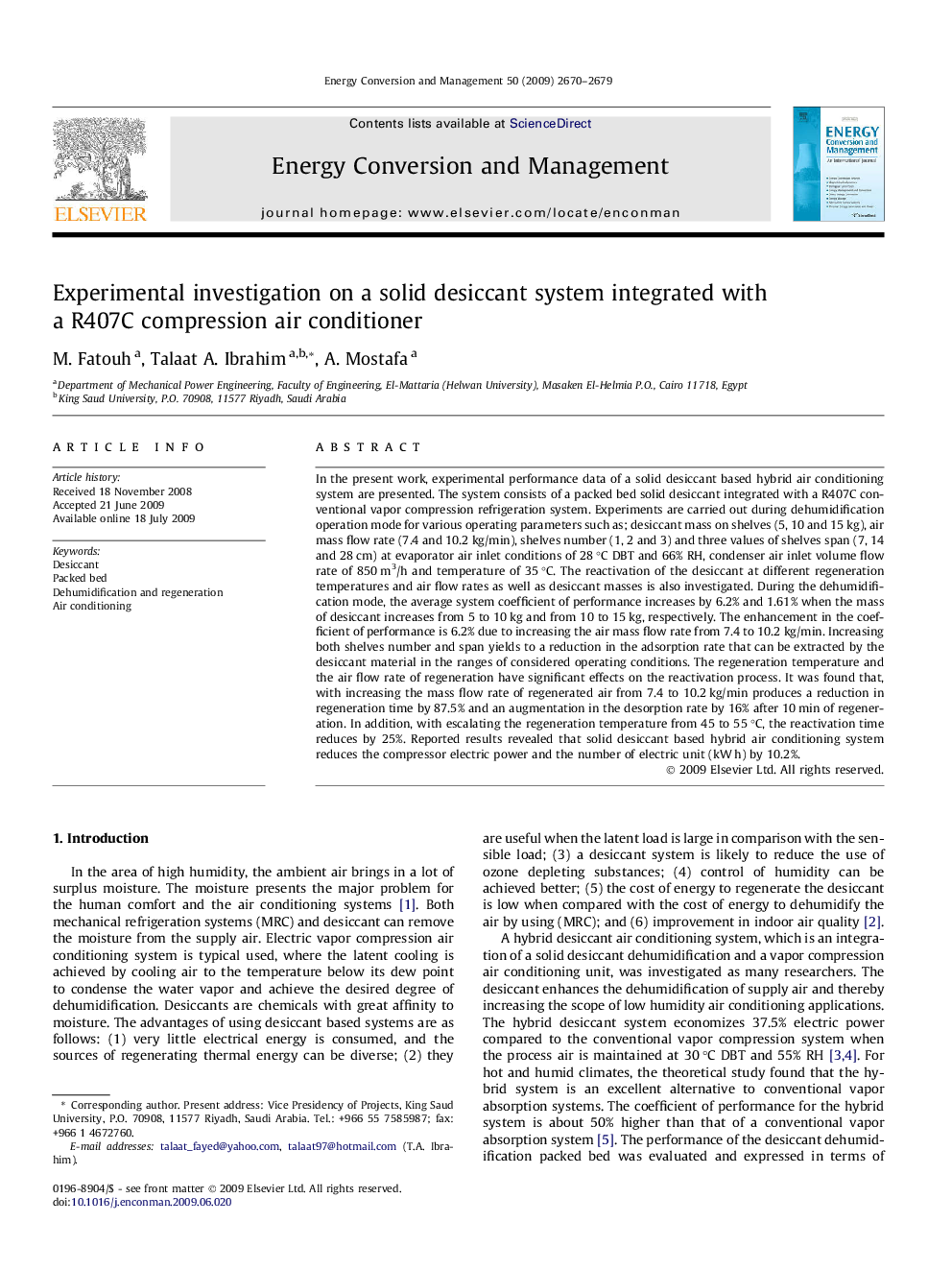| Article ID | Journal | Published Year | Pages | File Type |
|---|---|---|---|---|
| 764931 | Energy Conversion and Management | 2009 | 10 Pages |
In the present work, experimental performance data of a solid desiccant based hybrid air conditioning system are presented. The system consists of a packed bed solid desiccant integrated with a R407C conventional vapor compression refrigeration system. Experiments are carried out during dehumidification operation mode for various operating parameters such as; desiccant mass on shelves (5, 10 and 15 kg), air mass flow rate (7.4 and 10.2 kg/min), shelves number (1, 2 and 3) and three values of shelves span (7, 14 and 28 cm) at evaporator air inlet conditions of 28 °C DBT and 66% RH, condenser air inlet volume flow rate of 850 m3/h and temperature of 35 °C. The reactivation of the desiccant at different regeneration temperatures and air flow rates as well as desiccant masses is also investigated. During the dehumidification mode, the average system coefficient of performance increases by 6.2% and 1.61% when the mass of desiccant increases from 5 to 10 kg and from 10 to 15 kg, respectively. The enhancement in the coefficient of performance is 6.2% due to increasing the air mass flow rate from 7.4 to 10.2 kg/min. Increasing both shelves number and span yields to a reduction in the adsorption rate that can be extracted by the desiccant material in the ranges of considered operating conditions. The regeneration temperature and the air flow rate of regeneration have significant effects on the reactivation process. It was found that, with increasing the mass flow rate of regenerated air from 7.4 to 10.2 kg/min produces a reduction in regeneration time by 87.5% and an augmentation in the desorption rate by 16% after 10 min of regeneration. In addition, with escalating the regeneration temperature from 45 to 55 °C, the reactivation time reduces by 25%. Reported results revealed that solid desiccant based hybrid air conditioning system reduces the compressor electric power and the number of electric unit (kW h) by 10.2%.
